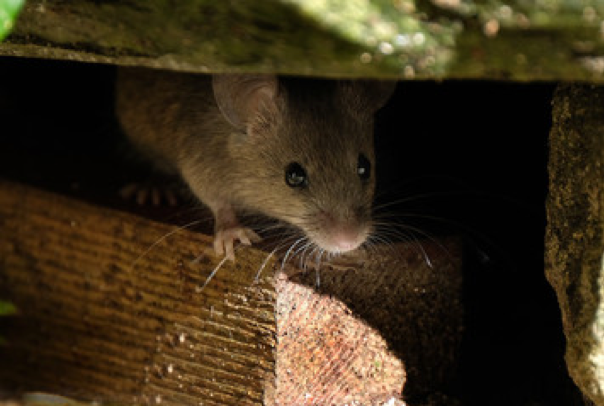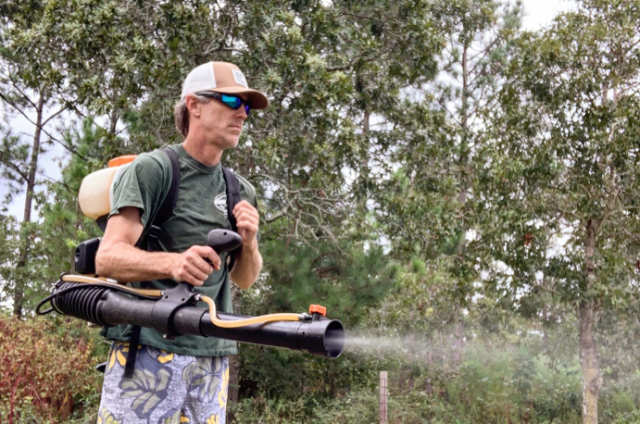Fall is a beautiful time of year marked by the changing leaves and cooler weather.
Unfortunately, as the weather starts to cool, a variety of outdoor pests try to find their way into our homes to avoid the impending winter- bringing with them bacteria, diseases, and potential damage.
Jonathan Sears, owner of SC-based Natural Roots Pest Control and Wildlife Removal, recognizes that many there are many steps that we can take to prevent pest infestations in the fall.
To help homeowners assess their need for expert assistance ahead of the cooler months, Jonathan includes a short list of pests that we may find in our houses as well as the best methods to prevent an infestation.
1. Cockroaches
When the weather starts to cool down, cockroaches begin to look for spaces to hide indoors in search of water, food, and warmth.
There is not much evidence that links roaches to specific disease outbreaks- unlike some other fall pests- however, they can spread up to 33 kinds of bacteria that can cause salmonella, streptococcus, or staphylococcus if deposited on food.
How to Prevent a Roach Infestation
One of the best methods for preventing cockroach infestations is to use a proactive approach. After all, roaches are in search of food and water, so eliminating food and water sources while getting rid of potential hiding places can go a long way towards control.
For example, homeowners should check for any leaks, since moisture can attract roaches. Taking out garbage in a timely manner and ensuring food is placed in tightly sealed containers are also excellent preventative measures, as well as sealing cracks and crevices to stave off access to your home.
Remember that- if you see baby roaches- it is a sign of a major infestation within your home because it means that they are reproducing. In these cases, it would be wise to consult a pest control specialist for more permanent solutions.
2. Rodents

Rodents such as mice and rats can be a concern when the weather cools down because of the damaging impacts they can have on the structure of a home.
Not only can mice and rats spread diseases by bringing fleas, ticks, and lice in with them, but they are also known to chew through wiring, mess with insulation, and squeeze through even the smallest cracks and spaces in our homes.
How to Prevent a Rodent Infestation
The best way to keep out rodents is by rodent-proofing your living space as securely as possible ahead of cooler weather. This means sealing gaps and openings that are located around the exterior of your home, covering outdoor vents, repairing openings in window and door screens, etc.
Much like with other pests, it is also effective to make sure that your home is not an attractive place to sneak a meal by storing food and perishables in airtight containers.
Remember that you should always check in with a professional if you suspect that there is a rodent infestation in your home, because they can reproduce very quickly. Where there is one, there may be many!
3. Spiders
Spiders can be an issue year-round but, during their mating season in the fall, you may notice that there are more both outside and in your home.
Spiders are one of the pests that can be helpful to have around because they feed on other creepy crawlies that may otherwise infest our homes. Still, too many spiders can be a problem in and of itself- especially for homeowners that have arachnophobia.
How to Prevent a Spider Infestation
Spiders that enter our home during fall are often in search of food or a mate, so cutting access to both can be an effective method to stave off an infestation.
Some experts recommend checking the perimeter of your home if you notice that you are finding a lot of spiders. Tips such as reducing the light sources near the outside of your home can be a helpful step because spiders’ prey may be attracted to them- causing spiders to set up shop near your home.
Spiders like having places to hide either to stalk or set up their webs, so decluttering after the summer and filling in cracks and crevices can also be a great way to prevent infestations.
4. Bees
 Many believe that bees are most active during the summer months, but this is not always true. During the autumn, these bugs are hard at work gathering nutrients to prepare for the winter.
Many believe that bees are most active during the summer months, but this is not always true. During the autumn, these bugs are hard at work gathering nutrients to prepare for the winter.
Bees may make their way into your home, but they are not looking to cause you any harm. Still, hives can be unnerving for homeowners, especially if anyone in the family is allergic.
How to Mitigate a Bee Infestation
Because bees extremely important to the ecosystem, many pest control experts are against treating for them. One of the best ways to prevent stings is to avoid hives, as stinging insects will usually only swarm or attack if provoked.
If you have an unusual amount of bee activity near your home, it may be possible for a pest control expert to mitigate the situation by relocating the hive. Not only will this ensure that the bees are protected and able to do their job elsewhere, but it will also make it much less likely that anyone gets stung.
5. Stink Bugs
Stinkbugs often enter our homes during fall months because they are prepping for hibernation. While they do not carry diseases or present any biting risk to homeowners or their pets, they can be noisy, clunky, and a source of nuisance when they get inside. Their droppings can also damage furniture, clothing, and household fabrics.
Stinkbugs, much like other overwintering pests, will usually gather near the warmest parts of homes and crawl in through gaps around windows, utility chases, and under siding.
How to Mitigate a Stink Bug Infestation
Stinkbugs and other beetles typically resist pesticide treatments, so the best methods for getting rid of them usually involve keeping them out. Like other pests coming in from the outside, this can be done by filling openings and gaps around windows, doors, and siding.
Consult a Professional Before Fall Pests Become a Problem!
 If there is one thing to remember about fall pests it is that they can get out of hand quickly if given the time to get comfortable. For this reason, if you notice signs of an infestation, it is best to consult a professional ASAP to discuss next steps. A pest control specialist can assess your home for likely entrance points for bests as well as create an actionable plan to stave off infestation before the problem gets out of control.
If there is one thing to remember about fall pests it is that they can get out of hand quickly if given the time to get comfortable. For this reason, if you notice signs of an infestation, it is best to consult a professional ASAP to discuss next steps. A pest control specialist can assess your home for likely entrance points for bests as well as create an actionable plan to stave off infestation before the problem gets out of control.






